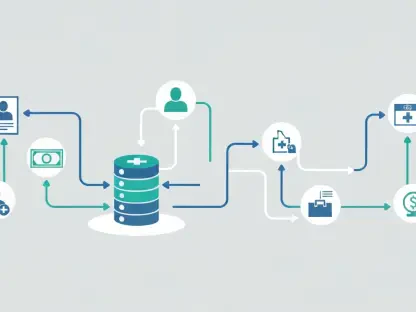The Cybersecurity and Infrastructure Security Agency (CISA) recently announced critical updates aimed at bolstering vulnerability management and establishing best practices for secure software deployment. This effort underscores the ongoing priority of strengthening cyber defenses in the face of escalating threats. Among the significant focus areas of this update was Fortinet’s critical FortiManager vulnerability (CVE-2024-47575). This vulnerability enables remote, unauthenticated actors to exploit systems, potentially gaining access to sensitive information or dominating the affected systems. Despite the availability of patches and updates, administrators are urged by CISA to apply them promptly, actively look for any signs of exploitation, and report their findings to the Agency.
Fortinet’s Critical Vulnerability
Understanding the FortiManager Vulnerability
The vulnerability in Fortinet’s FortiManager is a glaring issue that poses risks to critical infrastructures and sensitive data. This specific vulnerability (CVE-2024-47575) allows remote, unauthenticated actors to exploit vulnerable systems, providing an entry point for unauthorized access and potential control over the systems. The implications of such a breach can be severe, including data leakage, system hijacking, and further propagation of malware throughout the network. The urgency surrounding the application of available patches and updates cannot be overstressed, as delaying these actions increases the risk of cyber attackers successfully exploiting this vulnerability.
Despite the urgency communicated through advisories, CISA advises administrators to not only apply the patches but also to proactively hunt for any indications of exploitation. Recognizing the markers of a potential breach and acting swiftly can mitigate the longer-term impacts of such vulnerabilities. Administrators are expected to be vigilant, review the associated Fortinet advisory, CISA alert, and the Google Threat Intelligence article for comprehensive insights. This proactive approach and collaboration with intelligence resources enhance the overall resilience of the cybersecurity infrastructure.
Secure Software Deployment Guidance
Safe Software Deployment Emphasis
In collaboration with U.S. and international partners, CISA has published a detailed guidance document titled “Safe Software Deployment: How Software Manufacturers Can Ensure Reliability for Customers.” This document serves as a cornerstone for secure deployment processes, emphasizing reliability and safety throughout the software development lifecycle (SDLC). The guide promotes evaluation and continual improvement of deployment processes, encouraging manufacturers to embed security considerations from the earliest stages of development through to deployment and maintenance. By integrating these practices, manufacturers can significantly reduce the risk of deploying vulnerable software that can be exploited by malicious actors.
Manufacturers are encouraged to adopt a proactive stance, reviewing their deployment procedures against the guidelines and striving for continual enhancement. This guidance is particularly vital for entities managing critical infrastructure, where reliability and security are paramount. The document also highlights collaboration with partners as a crucial element, recognizing that a coordinated effort is essential to counteract sophisticated cyber threats. The guide aims to establish a standard framework that manufacturers can adopt, ensuring a higher level of security and reliability for the end-users.
Product Security Bad Practices
In another significant move to fortify software security, CISA and the FBI have issued joint guidance highlighting Product Security Bad Practices as part of CISA’s Secure by Design initiative. This document identifies risky practices in software manufacturing, categorizing them into product properties, security features, and organizational processes and policies. It is aimed specifically at promoting secure software development practices, particularly for those supporting critical infrastructure and national functions. However, the recommendations extend beyond critical sectors, urging all software manufacturers to avoid these identified bad practices.
The guidance document encourages public feedback through the Federal Register until December 2, 2024. This open call for feedback embodies the collaborative spirit CISA seeks to foster within the cybersecurity community. By engaging stakeholders in dialogue and inviting feedback, CISA ensures that the guidelines remain relevant and comprehensive. CISA’s recommendation to avoid these risky practices serves as a call to action for manufacturers to elevate their security standards, thereby protecting infrastructure and sensitive data from cyber threats.
Conclusion
The Cybersecurity and Infrastructure Security Agency (CISA) has recently announced crucial updates targeting enhanced vulnerability management and the adoption of best practices for securing software deployments. This initiative highlights the continuous priority of reinforcing cyber defenses amidst growing threats. Key among these updates is a critical vulnerability in Fortinet’s FortiManager (CVE-2024-47575). This flaw allows remote, unauthenticated attackers to exploit systems, potentially accessing sensitive information or taking control of the affected systems. Although patches and updates are available, CISA strongly urges administrators to apply these fixes without delay. They are also encouraged to actively monitor for signs of exploitation and report any suspicious activity to the Agency. This proactive approach aims to safeguard sensitive data and ensure robust cyber defense mechanisms are in place. The importance of timely updating and thorough monitoring cannot be overstated in maintaining cybersecurity resilience.









